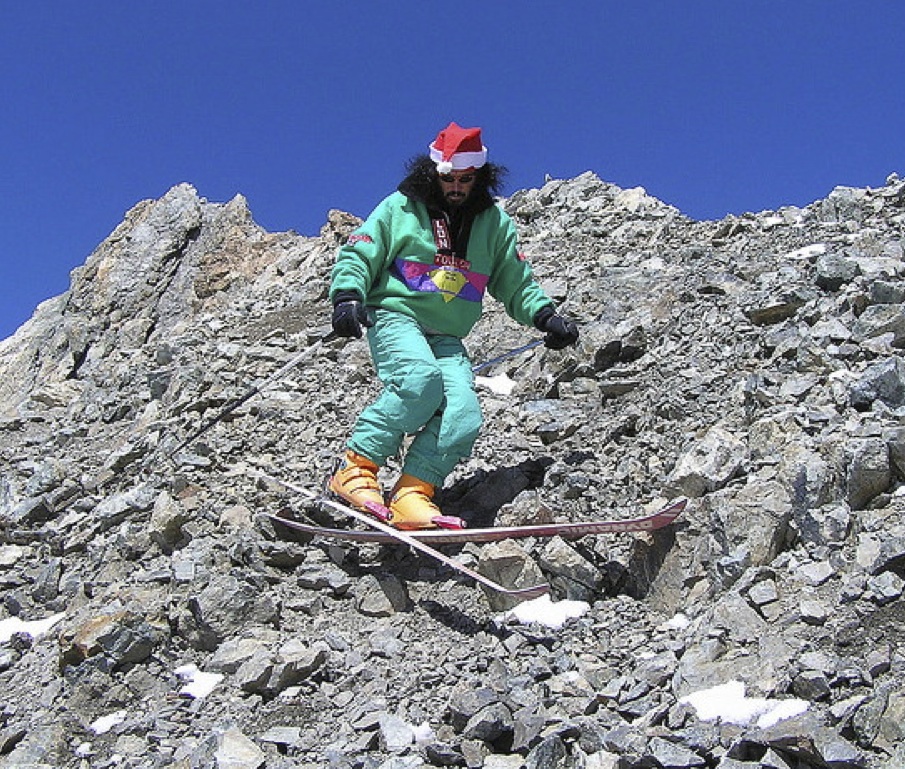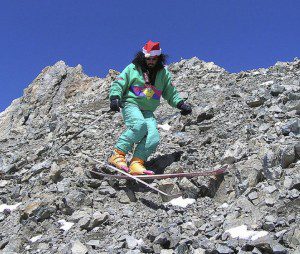
31 Aug EARTH MATTERS: THE FATE OF TELLURIDE’S SNOW PACK
I find it a bit ironic that “climate change deniers” Mitt Romney’s and Paul Ryan’s Republican convention in Tampa, Florida, had to be rescheduled because of a tropical storm caused by global warming.
Climate change increases the frequency and intensity of extreme weather events due to human-induced activities such as fossil fuel combustion. In the last century, the average global temperatures have exceeded any previous century within the last 120,000 years and will continue to rise if the “business-as-usual” policies of the Republicans – and even many of the rest of us – remain in place.
This past summer, while conducting climate change research for the Aspen Global Change Institute, I was frequently asked by local skiers if last season’s low snow pack was an anomaly or a proxy indicator of future snow pack’s in the Rocky Mountains of Colorado.
The simple answer is yes and yes.
If I were to only look at seasonal climate variation models in the last decade they would reveal that seasonal variations are normal as the Earth attempts to compensate for human-induced impacts. Thus, based on centuries of observed data I would not expect this coming ski season to be the same as last year. Not to say it could not happen, but it is statistically not likely.
However, geographic and temporal distribution of proxy indicators such as ice cores, ancient pollen, coral reefs, and sediments over the last 800,000 years indicates that human-induced activities since the beginning of the industrial revolution have caused significant global warming. Between 1880 and 1980, the observed global surface air temperature has risen more than 0.70 C. As a result of global warming, the Inter-tropical Convergence Zone and polar front shift as the Ferrell cell and Polar cell expand because of the additional heat energy added to the atmospheric system.
In short, go skiing now because by the year 2030, snow packs like last season’s will occur on a more frequent basis and by the year 2100, science-based research conducted in Aspen indicates that the critical elevation where seasonal snowpacks are obliterated due to global warming will move from approximately 7,500 ft. to 9,300 ft. – yes, even if we take immediate action to reduce human-induced greenhouse gases to 30% below 1990 levels. However, if we take no action, as proposed by the “climate change deniers,” the critical elevation will increase up to 10,300 ft. In addition, by the year 2100, the ski season in Aspen will begin approximately 1.5 weeks to 4.5 weeks later and end a month earlier.
As a consequence of the overwhelming evidence that the base area of Aspen Mountain will not have a skiable snowpack by the 2100, the Aspen Ski Company envisions using the gondola to transport skiers to the top of the mountain where they will still be able to make snow.
Although Telluride has not yet conducted the same level of research as Aspen, it does not take a climate scientist to understand the significant impact global warming will have on Telluride’s snow pack and skiing as well.
Globally, unless we make significant changes to “business as usual,” skiing in the future is likely to become a thing of the past.




Pingback:As the World Warms, the Future of Skiing Looks Bleak | Off the Road
Posted at 14:19h, 11 December[…] Nevada winter snowpack may have decreased by as much as 70 percent from average levels of today; in the Rockies, the elevation of full winter snow cover may increase from 7,300 feet today to 10,300 feet by the […]
anonymous
Posted at 09:22h, 04 DecemberInteresting article. Aspen is facing up to their problems and that is admirable. Check out the new book DEEP: The Story of Skiing and The Future of Snow to know more.